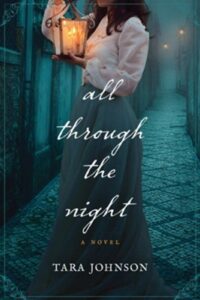By Tara Johnson, @TaraMinistry
If you’re somewhat new to the craft of writing, you may have heard the term POV from time to time. But what is it and why do these quirky writer types talk about it so much?
POV is short for ‘point-of-view’. Point-of-view not only refers to the type of POV you’re going to use, but it also refers to the unique way you immerse your readers into the depths of your tale. Basically, it’s writing so compelling, the reader feels like they have slipped inside your character’s skin and feels what they feel, know what they know, and look at life through your character’s eyes.
If you really want someone to experience the joy of swimming in the deep end, will you let them stretch out on a beach chair and splash them lightly while you frolic in the water? Not likely. If you want them to truly understand what it’s like to float weightlessly, to have water dripping from their lashes, to blink against the bright sunlight winking from atop the waves, or to be so submerged that water fills up their nostrils, you’re going to pull them in and give them a good dunking. A nice story is like a splash. An amazing story is submersion.
Here’s the catch: in order for your readers to feel your story on such a deep level, you’ll have to write from that same depth.
I’m often amused when people tell me writing must be such a nice escape. No, writing is hard. It’s the equivalent to what actors go through on a daily basis. You’re scraping together all of your life experience to relive all your horrors, your pain, your joys, your triumphs, your ecstasies and agonies and funnel them into 90,000 words. Writing is living life twice.
When I’m doing a paid critique of someone’s work, one thing that lets me know the writer is new to the craft is how they use, or don’t use, POV.
So let’s break it down. Academically, POV usually falls into three main categories.
1st person: Telling the story through the main character’s eyes. (Focus on I, me, and we) The advantage: The ability to go deep within your character’s emotions and thoughts. Disadvantage: You will be unable to jump inside another character’s head for their perspective.
Example:
“And while I was talking, the idea of actually losing Peeta hit me again and I realized how much I don’t want him to die.”
~Collins, The Hunger Games
2nd person: the author addresses the reader directly and does not use other pronouns to refer to the narrator. (Focus on you) It basically forces the reader to become a main character, making them part of the action. Books written in 2nd person are rare, but it can be done with a masterful use of POV.
Example:
“You have brains in your head. You have feet in your shoes. You can steer yourself any direction you choose.”
~Dr. Suess, Oh, the Places You’ll Go!
3rd person: The author tells the story of multiple characters, but is not part of the action themselves. (Focus on he, she, they, etc.)
Example:
“They all remembered, or thought they remembered, how they had seen Snowball charging ahead of them at the Battle of the Cowshed, how he had rallied and encouraged them at every turn, and how he had not paused for an instant even when the pellets from Jones’s gun had wounded his back.”
~George Orwell, Animal Farm
Here is where things can get tricky. If an author is writing in third person and isn’t careful, they can inadvertently do a couple of things that will yank their reader from the story.
- Head hopping: Jumping from one character’s viewpoint and thoughts into another character’s head without a scene break to differentiate between the two. A good rule of thumb in 3rd person is to keep it limited to one character’s POV per scene.
- Self-description: If we are writing a scene where a character is frustrated, and keeping in mind we want to be inside the character’s head, many new writers will say something like, “Olivia ran her fingers through her blonde hair and tugged.” Speaking for myself, when I’m perturbed about something, I don’t tend to think of my own hair color. I just dig my fingers into my scalp and pull, as if doing so will release some pent-up steam. If writing a scene where our character is surprised, some will write, “Olivia’s eyes widened at John’s confession.” If we’re in Olivia’s viewpoint, we can’t see our own eyes dilate or widen. We can only observe that in others. These small details will pull our readers from the emotion we’re trying to convey and leave them scratching their heads.

Deep POV Writing Tips
- Know your characters inside and out before you begin.
When we meet someone for the first time, their existence doesn’t begin the moment we say “hello”. They come with their own history, talents, failures, and interests. Our characters are the same way. A baker will look a life differently from a software engineer. The child of an alcoholic will see the world through a much different lens than boy or girl growing up with everything their heart desires. Know your characters and crawl inside their skin.
- Eliminate dialogue tags.
Instead of writing “Eleanor murmured, ‘This is a bad idea.’”, try using action beats instead. “Eleanor swallowed the lump rising in her throat. ‘This is a bad idea.’”
- Put your characters’ thoughts on the page.
Example:
“’Don’t fail. Tonight of all nights, don’t fail.’ Keziah Montgomery placed her gloved fingers into the waiting hand of the man smiling at her with confident expectation.”
~Johnson, Engraved on the Heart
- Ramp up use of all five senses.
Sensory details are instant transporters. Use them liberally to suck your reader into your world. The one most writers forget? Smell.
Example:
“You know how summertime is down South. It comes to you in the smell of watermelons and distant rain and the smell of cotton poison and schools of catfish that have gotten dammed up in a pond that’s about to be drained. It comes to you in a lick of wet light on razor wire at sunup. You try to hold on to the coolness of the night, but by noon you’ll be standing inside your own shadow, hoeing out long rows of soybeans, a gunbull on horseback gazing at you from behind his shades in the turnaround, his silhouette a black cutout against the sun.”
~James Lee Burke, Big Midnight Special
- When writing in 3rd person and you don’t know whose POV to use, tell that scene from the character’s POV that has the most to lose.
The best stories are not only character-driven or plot-driven, but conflict driven. To keep your reader turning the pages, always think about who has the most to lose. The one who is terrified their secret will be revealed. The one who can’t dare let anyone see what a trembling mess they are inside. Use their fear and write from those deep places.
- Focus on details.
To immerse your reader, it’s not enough to mention a dog, or a flower, or a place. They need to know more. Specific details make scenes come alive.
Example:
“Josh’s heart thudded against his ribs as the German Shepherd nipped ever closer to his heels, teeth bared, growl rumbling in his throat. Just a little bit farther. Josh jumped, tumbling into Mrs. Alvin’s gardenias. Pain exploded through his back as he covered his head, waiting for the canine menace to sink his fangs into Josh’s Levi jeans.”
- Shortcut 101
When you’re unsure if you’re nailing this POV thing, try switching your current scene into first person. Turn all the she, him, and they statements into I, me, and mine. Any weak POV writing will be exposed with a couple read-throughs.
The goal isn’t just to tell a good story. It’s to live life through your character’s eyes. Dive into the deep end and watch your writing transform.
With her stammering tongue and quiet ways, Cadence Piper has always struggled to be accepted. After the death of her mother, Cadence sets her heart on becoming a nurse, both to erase the stain her brother has left on the family’s honor and to find long-sought approval in the eyes of her father. When Dorothea Dix turns her away due to her young age and pretty face, Cadence finds another way to serve . . . singing to the soldiers in Judiciary Square Hospital. Only one stubborn doctor stands in her way.
Joshua Ivy is an intense man with a compassionate heart for the hurting and downtrodden. The one thing he can’t have is an idealistic woman destroying the plans he’s so carefully laid. When the chaos of war thrusts Cadence into the middle of his clandestine activities, he must decide if the lives at stake, and his own heart, are worth the risk of letting Cadence inside.
Everything changes when Joshua and Cadence unearth the workings of a secret society so vile, the course of their lives, and the war, could be altered forever. If they fight an enemy they cannot see, will the One who sees all show them the way in the darkest night?
Tara Johnson is an author and speaker, and loves to write stories that help people break free from the lies they believe about themselves. Tara’s debut novel Engraved on the Heart (Tyndale) earned a starred review from Publishers Weekly, and was a finalist in the Carol and Christy awards. In addition to being published in a variety of digital and print magazines, she has been a featured guest on Voice of Truth radio, Enduring Word radio, television and podcasts. She is a history nerd, especially the Civil War, and adores making people laugh. She, her husband, and children live in Arkansas.




Comments 2
Great blog post. 🙂 I’ve been writing my current WIP in first person so I can go as deep as possible. I have two main characters, so when a scene or POV changes, I note at the scene break who ‘s POV I’m in, time of day, etc. It’s been very helpful for getting to know my characters. I’ll go back and change to third person in the final draft.
What great tips, Tara! I’ve been working on that sense of smell you mentioned. You’re right – we often overlook that.